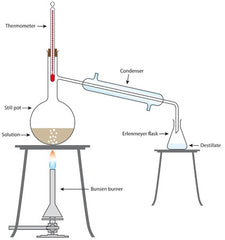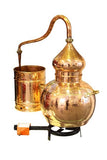The more I talk to people, the more I find that there is a lot of confusion over what exactly an essential oil is. Many people tell me that they are making essential oils at home, but the further we get into the conversation, I realize what they're actually talking about it infused oils. There is a huge difference between the two. With all the misinformation being spread across the internet, especially through social media sites like Facebook, it's easy for the average person to get confused. But once you know the difference, it will be simple to tell which is which. These are the basics:
Essential Oils
 Essential oils are highly aromatic, volatile oils (they readily evaporate at normal temperatures) produced by plants, and extracted by humans. Essential oils may be found in one or more plant parts: flowers, leaves, stems, and roots, as well as the occasional fruit (usually the peels or seeds are used, not the actual flesh of the fruit), depending on the plant.
Essential oils are highly aromatic, volatile oils (they readily evaporate at normal temperatures) produced by plants, and extracted by humans. Essential oils may be found in one or more plant parts: flowers, leaves, stems, and roots, as well as the occasional fruit (usually the peels or seeds are used, not the actual flesh of the fruit), depending on the plant.
The traditional definition for essential oils is "steam distilled volatile oils from plants", but that has been changing over the years. Some aromatherapists (like me) also include other types of extracts such as CO2 extracts and absolutes in the blanket term of "essential oils", to be used in aromatherapy. The things that are always true for essential oils is that they are aromatic and volatile, and their only ingredient is the oil itself. Some examples are lavender essential oil, jasmine absolute, and fresh ginger CO2 extract.
Essential oils are not something you can make at home without distillation equipment. The plants are heated in water, and the chemical constituents are carried in steam to a condenser where they are cooled and turn back into oil.
The image above to the left is a basic distillation setup. You might remember this from a science class. To the right is an Alembic still, commonly used in essential oil distillation.
Essential oils always need to be diluted before using on the skin.
Infused Oils
Infused oils are carrier oils (non-volatile) infused with plant parts.
Carrier oils are thick oils extracted, usually by pressing, from plants. Seeds, nuts, and fruits are most commonly used, as for olive oil, almond oil, and coconut oil. The strength of a carrier oil's aroma depends on what oil it is, and how refined it is.
 The carrier oils are then used as a solvent to extract beneficial chemical constituents from other plant parts. A good example is calendula oil, used in all Wunder Budder lip balms and salves.
The carrier oils are then used as a solvent to extract beneficial chemical constituents from other plant parts. A good example is calendula oil, used in all Wunder Budder lip balms and salves.
These can easily be made at home using different methods, all of which the main idea is to soak the plants in the carrier oil long enough, and/or gently heat the oil long enough depending on the method used, for the oil to absorb its components.
An infused oil would be made up of two or more ingredients. In the case of our calendula oil, the main ingredients are apricot kernel oil, jojoba, and calendula flowers (along with a antioxidant from rosemary).
Infused oils may be used directly on the skin.

